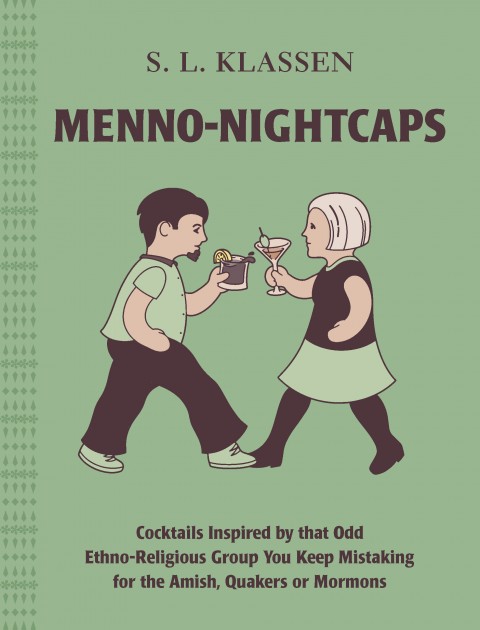 Like any good Mennonite following an Anabaptist tradition, whenever I have doubts as to my decisions as a mother, I just ask myself: What would Anneke Jans Do (WWAJD)?
Like any good Mennonite following an Anabaptist tradition, whenever I have doubts as to my decisions as a mother, I just ask myself: What would Anneke Jans Do (WWAJD)?
As I have mentioned elsewhere, when Mennonites look for role models, we typically skip past several centuries and settle in on sixteenth-century Europe as the proper time and place for the discovery of heroes.
As this period is commonly understood to be before the era of modern motherhood, it isn’t easy for a devout mother in the Anabaptist tradition to find someone who embodies everything that we like to think of as Anabaptist mothering. These were the days of martyrdom and wonder, after all, not so much the days of snack time and diapers.
Lots of Anabaptist women were sent to their deaths in the sixteenth century and a fair number of them were mothers of small children at the time. As far as I can make out from my cursory survey of the historical Internet, the fate of the children varied by region, year and the whim of the particular persecutors.
- Sometimes the spouse or other kindred took the kids.
- Sometimes they were fostered into non-heretical families.
- Sometimes they were abandoned to the street.
It was presumably this last option that Anneke Jan’s feared as she was led off, babe in arms, to her martyrdom in 1539.
Anneke was traveling when she was apprehended and had no babysitters at hand to mind her child while she took care of the business of martyrdom. Well, she actually had another woman with her but as that woman was also an Anabaptist and was also arrested, she was not a particularly reliable childminder. Which meant that Anneke carried the toddler with her as the crowd ushered her off to the place of execution.
Troubled by this loose end, Anneke stopped part way and addressed the crowd, offering up her wealth to anyone who would take and raise her child. A wealthy woman, she had apparently liquidated her assets and so passed on her estate along with a letter for her son right then and there to the baker who stepped forward and relieved her of the little boy. This taken care of, Anneke then went forth to the place of her drowning in a state of virtuous readiness.
The story doesn’t end there. The martyrdom accounts tell that the fellow who denounced Anna was killed by the collapse of a bridge while en route to watch her execution. The good baker, on the other hand, was blessed with prosperity for the rest of his life and the boy grew up to become a brewer and burgomaster of the town. As if by Divine Will.
It is a strange happy ending for a woman whose earlier writings demonstrate an impassioned longing for martyrdom and who wrote to her son the night before her drowning exhorting him to avoid the ways of the world. Had she lived, I can’t imagine her encouraging her son’s interest in the affairs of the state, or being happy that he embraced the faith of the majority.
All the same, Anneke’s is a well-loved story – a maternity parable tugging at heart strings that reach across the centuries. It’s not half as well-known as the Dirk Willems story but that’s not the fault of her admirers and detractors who have done their best to keep her story alive. Some of these writers even reference her songs and letters that are not in any way related to her role as a mother.
Not me, though.
This is a Mother’s Day post and so I am steadfastly ignoring Anneke’s revolutionary, eschatological and spiritualist preoccupations. Instead, I present here five lessons from Anneke’s story for mothers in the Anabaptist tradition.
Have child; will travel
No need for “Kid-Friendly” hotels and restaurants. Have a business or religious trip? Bring the kid.
Some things are just not appropriate for toddlers’ eyes.
Like, for instance, their mothers’ drowning. Best to have the child taken away before it comes to the end.
You can write your kids a letter but you can’t make them agree with you
This is particularly true if you tell your child to be counter cultural but don’t stay alive long enough to really model it.
Child care can be expensive and hard to find
If possible, always carry enough cash to hire a last minute babysitter/adoptive parent should you suddenly run into religious persecution.
If you’re really virtuous and blessed, your child might grow up to be a brewer.
Or maybe a distiller.
The Anneke Jans

Anneke suffered for her faith; the suffering bastard cocktail was created for people who suffered from too much drink. This is a variation, using grenadine to represent the blood of the godless in which we will wash our feet in the end times (as immortalized in Anneke’s Trumpet Song).
- 1 oz gin
- 1 oz brandy
- 1/2 oz lime juice
- 1/2 oz grenadine
- 2 oz tonic water
- bitters
Shake the gin, brandy, lime and grenadine with ice. Strain into a short glass and top with tonic water and a couple of dashes of angostura bitters. Stir gently, garnish and serve. And of course, as you drink this cocktail, think of the Anabaptist mothers of yore whose mothering practices were a bit different from ours, and a bit the same.


